
Gallary
-
Hotel Nacional
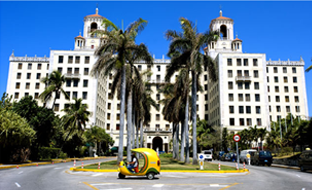
The Hotel Nacional de Cuba is a historic luxury hotel located on the Malecón in the middle of Vedado, Havana, Cuba. It stands on Taganana hill a few metres from the sea, and offers a view of Havana Harbour, the seawall and the city.
The New York architectural firm of McKim, Mead and White designed the hotel, which features a mix of styles. It opened in 1930, when Cuba was a prime travel destination for Americans, long before the United States embargo against Cuba. In its 80+ years of existence, the hotel has had many important guests.
The hotel was built on the site of the Santa Clara Battery, which dates back to 1797. Part of the battery has been preserved in the hotel's gardens, including two large coastal guns dating from the late 19th Century. There is also a small museum there featuring the 1962 Cuban missile crisis. During the crisis, Fidel Castro and Che Guevara set up their headquarters there to prepare the defence of Havana from aerial attack.
The Hotel Nacional de Cuba is a World Heritage Site and a National Monument, and it was inscribed in the World Memory Register.
-
Revolution Square "José Martí"
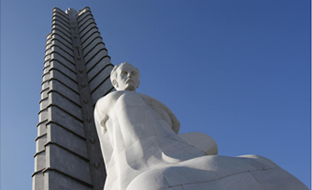
José Julián Martí Pérez (January 28, 1853 – May 19, 1895) is a Cuban national hero and an important figure in Latin American literature. In his short life, he was a poet, an essayist, a journalist, a revolutionary philosopher, a translator, a professor, a publisher, and a political theorist. Through his writings and political activity, he became a symbol for Cuba's bid for independence against Spain in the 19th century, and is referred to as the "Apostle of Cuban Independence."[1] He also wrote about the threat of Spanish and US expansionism into Cuba. From adolescence, he dedicated his life to the promotion of liberty, political independence for Cuba, and intellectual independence for all Spanish Americans; his death was used as a cry for Cuban independence from Spain by both the Cuban revolutionaries and those Cubans previously reluctant to start a revolt.
Born in Havana, Martí began his political activism at an early age. He would travel extensively in Spain, Latin America, and the United States, raising awareness and support for the cause of Cuban independence. His unification of the Cuban émigré community, particularly in Florida, was crucial to the success of the Cuban War of Independence against Spain. He was a key figure in the planning and execution of this war, as well as the designer of the Cuban Revolutionary Party and its ideology. He died in military action during the Battle of Dos Ríos on May 19, 1895.
Martí is considered one of the great turn-of-the-century Latin American intellectuals. His written works consist of a series of poems, essays, letters, lectures, a novel, and even a children's magazine. He wrote for numerous Latin American and American newspapers; he also founded a number of newspapers himself. His newspaper Patria was a key instrument in his campaign for Cuban independence. After his death, one of his poems from the book, "Versos Sencillos" (Simple Verses) was adapted to the song "Guantanamera", which has become the definitive patriotic song of Cuba.
The concepts of freedom, liberty, and democracy are prominent themes in all of his works, which were influential on the Nicaraguan poet Rubén Darío and the Chilean poet Gabriela Mistral.
-
Morro Castle

Morro Castle Spanish: Castillo de los Tres Reyes Magos del Morro, named after the three biblical Magi, is a fortress guarding the entrance to Havana bay in Havana, Cuba. The design was drawn up by the Italian engineer Juan Bautista Antonelli; originally under the control of Spain, the fortress was captured by the British in 1762, and was returned to the Spanish under treaty terms a year later.[1]
The Morro fortress in Havana shares its name with structures in Santiago de Cuba and the Castillo de San Felipe del Morro in San Juan, Puerto Rico. In this case, the Spanish "morro" means a rock which is very visible from the sea and therefore serves as a navigational landmark.[2] Perched on the promontory on the opposite side of the harbor from Old Havana, it can be viewed from miles around as it dominates the port entrance. Built initially in 1589 in response to raids on Havana harbor, el Morro protected the mouth of the harbor with a chain being strung out across the water to the fort at La Punta.
-
Grand Theater of Havana
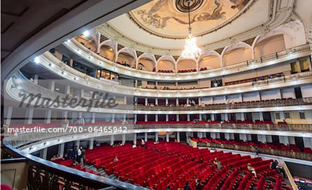
The Gran Teatro de La Habana (Spanish "Great Theatre of Havana") is located in the Paseo del Prado in Havana, Cuba. It is located in a building known as the Palace of the Galician Centre, which was built as a place of social reunion for the Galician immigrants in Havana. The theatre has been home of the Cuban National Ballet and, on its main stage, of the International Ballet Festival of Havana. It facilities include theatres, a concert hall, conference rooms, and a video screening room, as well as an art gallery, a choral centre, and several rehearsal halls for danzarias groups and dance companies.
It was officially opened in 1838, although its first presentation occurred on November 1837.
-
The Capitol

El Capitolio, or National Capitol Building in Havana, Cuba, was the seat of government in Cuba until after the Cuban Revolution in 1959, and is now home to the Cuban Academy of Sciences. "El Capitolio" has a size of 681 by 300ft. Its design and name recall the United States Capitol in Washington, D.C., but it is only superficially similar. Completed in 1929, it was the tallest building in Havana until the 1950s and houses the world's third largest indoor statue
-
El Floridita Bar
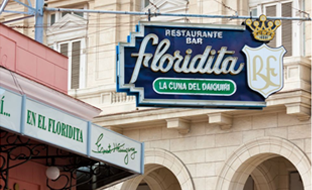
Floridita (Spanish pronunciation: [floɾiˈðita]) or El Floridita is an historic fish restaurant and cocktail bar in the older part of Havana (La Habana Vieja), Cuba. It lies at the end of Calle Obispo (Bishop Street), across Monserrate Street from the The National Museum of Fine Arts of Havana (Museo Nacional de Bellas Artes de La Habana). The establishment is famous for its daiquiris and for having been one of the favourite hangouts of Ernest Hemingway in Havana.
-
Old Square

The Old Square (Spanish: Plaza Vieja) is a plaza located in Old Havana, Cuba. The plaza and its surroundings are also one of the seven consejos populares (wards) of the municipality of Old Havana.[1] It has a residential population of 17,426.[1]
he plaza was originally called Plaza Nueva (New Square).[2] It emerged as an open space in 1559, after the Plaza de Armas and San Francisco. In colonial times it was a residential neighborhood of the Creole plutocracy.[2]
Plaza Vieja was the site of executions, processions, bullfights, and fiestas - all witnessed by Havana's wealthiest citizens, who looked on from their balconies.
The urban architectural complex of Plaza Vieja is represented by valuable colonial buildings from the XVII, XVIII and XIX and some examples of the early twentieth century.
-
La Bodeguita del Medio

La Bodeguita del Medio is a typical restaurant-bar of Havana (Cuba). It is a famous tourist destination because of the personalities which have patronized it: Salvador Allende, the poet Pablo Neruda, the writer Ernest Hemingway, the artist Josignacio and many others. La Bodeguita lays claim to being the birthplace of the Mojito cocktail, prepared in the bar since its opening in 1942, although this is disputed. The rooms are full of curious objects, frames, photos, as well as the walls covered by signatures of famous or unknown customers, recounting the island's past.
-
Cathedral Square
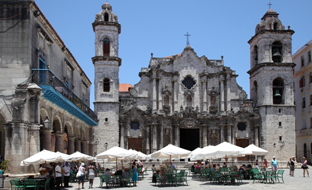
The Cathedral of The Virgin Mary of the Immaculate Conception (also known in Spanish as La Catedral de la Virgen María de la Concepción Inmaculada de La Habana) is one of eleven Roman Catholic cathedrals on the island of Cuba. Located in the Plaza de la Catedral, the Havana Cathedral is found in the center of Old Havana. This thirty-four by thirty-five meter rectangle church serves as the seat of the Roman Catholic Archdiocese of San Cristobal de la Habana which overlooks 7,542 square kilometers of the island and 2,821,000 Catholics.[1]
-
Square of Saint Francis de Assisi
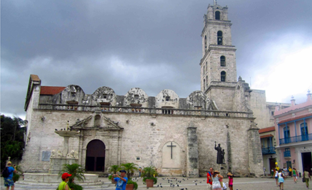
The most important building on the plaza is the Basilica Menor de San Francisco de Asís. The building where the current church and convent of Saint Francis of Assisi stand dates back to the 16th century. It is the location main Catholic orders established themselves in Havana. Since 1842 the Third Order of Saint Francis ran it. The order dates from the first half of the 17th century when Augustinian monks first arrived in Cuba. Its location made it the center of imports, export, sailors and troops disembarking. The construction of a humble Franciscan convent, later one of the most beautiful buildings in the area, gave its name to the open space.
-
El Templete
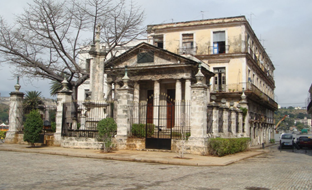
El Templete is a monument in Havana, Cuba, that pays homage to the place where the foundation of the town of San Cristóbal de la Habana was celebrated in 1519. The monument consists of bust of Christopher Columbus and three canvases painted by Jean Baptiste Vermay. It is a Neoclassic building, typical example of colonial architecture.
Close to the Templete, there is a column which replaces a silk-cotton tree, under which the first mass and the first Council of Havana were celebrated.
-
Malecón

The Malecón (officially Avenida de Maceo) is a broad esplanade, roadway and seawall which stretches for 8 km (5 miles) along the coast in Havana, Cuba, from the mouth of Havana Harbor in Old Havana, along the north side of the Centro Habana neighborhood, ending in the Vedado neighborhood. New businesses are appearing on the esplanade due to economic reforms in Cuba that now allow Cubans to own private businesses.
-
Real Fuerza Castle
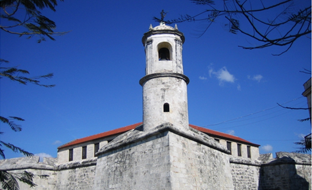
The Castillo de la Real Fuerza (Castle of the Royal Force) is a star fort on the western side of the harbour in Havana, Cuba, set back from the entrance, and bordering the Plaza de Armas. Originally built to defend against attack by pirates, it suffered from a poor strategic position, being too far inside the bay. The fort is considered to be the oldest stone fort in the Americas, and was listed in 1982 as part of the UNESCO World Heritage site of "Old Havana and its Fortifications".
-
Central Park
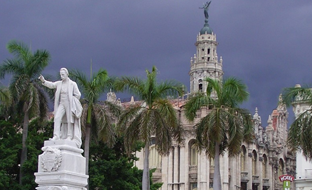
The Central Plaza was built in 1877 after the old city walls were demolished. Since February 1905, its large esplanade is presided by a statue of José Martí, which replaced a marble statue of Isabel II of Spain. The Central Plaza is surrounded by significant buildings, such as the Grand Theater of Havana, the Inglaterra, Telégrafo, Plaza and Parque Central Hotels, the old Gómez Mena mall, the Universal Art building of the Fine Arts National Museum and the Payret Movie Theater.
-
Payret Movie Theater
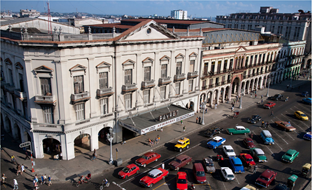
Cuba´s first motion picture theater, opened in 1897.
-
La Reunión Pharmacy

The old pharmacy was founded in 1886 by Catalan José Sarrá, and was therefore popularly known as Farmacia Sarrá. Opened in 2004 in the building where the old pharmacy La Reunión was located, this museum is considered the most important pharmaceutical complex in Cuba and one of the largest and most beautiful in the world. Specializing in the history of the most renowned pharmacies in Havana in the mid-19th and the early 20th centuries, it features amazing archaeological items, containers, documents, labels, flasks and sets of old surgical and dental instruments.
-
Hotel Ambos Mundos
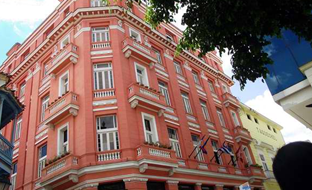
This 1920s eclectic hotel is best known for being described by Hemingway as "a good place to write." He stayed here during the 1930s and this is where he wrote his chronicles on fishing and the first chapters of For Whom the Bell Tolls. His room, No. 511, is maintained as if the author had never checked out and is a sort of mini museum featuring the writer's desk and authentic furniture from the period
-
Revolution Museum

The Museum of the Revolution (Spanish: Museo de la Revolución) is a museum located in the Old Havana section of Havana, Cuba. The museum is housed in what was the Presidential Palace of all Cuban presidents from Mario García Menocal to Fulgencio Batista. It became the Museum of the Revolution during the years following the Cuban revolution.
The building is an important part of post-revolutionary Cuban history. After the triumph of the Revolution, from 1959 to 1965, the building housed both the Government and the Council of Ministers and in 1965, the Central Committee of the Communist Party of Cuba was formed at the still Presidential Palace. In 1974, it became a museum dedicated to the Cuban Revolution, and two years later, it witnessed the approval of the 1976 Constitution. In 2010, it was declared National Monument.
-
Sloppy Joe´s Bar

Sloppy Joe's Bar is a historic bar located in Havana, Cuba. The bar reopened in 2013 after being closed for 48 years.[1]
The advent of Prohibition in the United States spurred its original owner, Jose Garcia Abeal, to change the emphasis from food service to liquor service[2] when American tourists would visit Havana for the nightlife, the gambling and the alcohol they could not obtain back home.
-
El Patio Casa del Marqués de Aguas Claras
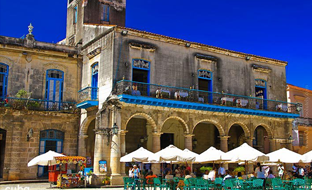
Located on the north-west corner of the former Plaza de la Ciénaga, today Plaza de la Catedral, this mansion stands out from its neighbors due to its wide and spacious portal juts out onto the plaza, thus breaking its symmetry. This mid-18th-century house (built from 1751-1775) boasts a beautiful inner courtyard and original 18th-century stained glass on its upper-floor windows.
-
Museo Nacional de Bellas Artes – Edificio de Arte Internacional
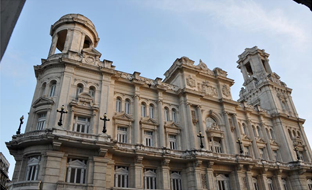
In 2001, after the new venues were chosen for the National Museum of Fine Arts, the international collection was installed in the former Centro Asturiano, a magnificent edifice built in Spanish Renaissance style in 1927. For its construction, 1,250 tons of marble from Italy, Spain and the United States were used, and Cuban cedar and mahogany for the woodwork. The stained-glass ceiling over the stairwell and the cast-bronze and Bohemian glass lamps were made in Spain.
-
Tropicana



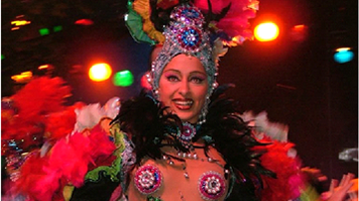


Tropicana, also known as Tropicana Club, is a world-known cabaret and club in Havana, Cuba. It was launched in 1939 at Villa Mina, a six-acre (24,000 m²) suburban estate with lush tropical gardens in Havana's Marianao neighborhood. The spectacular showplace that became The Tropicana evolved out of a Depression-era bohemian nightclub called Edén Concert, operated by Cuban impresario Victor de Correa. The Tropicana had an impact in spreading Cuban culture internationally.
-
Matanzas
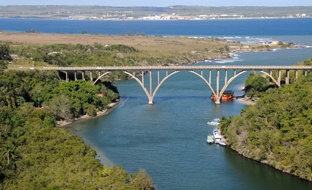
Matanzas, the capital of the Cuban province by the same name, is a small city with a big history. Since it was first settled in 1572, it has become known by numerous nicknames, including the City of Bridges, the Venice of Cuba and the Athens of Cuba. When it was founded in 1693, however, it was called San Carlos y San Severino de Matanzas. Translated from Spanish, the name "Matanzas" means massacre or slaughter. Its other common nomenclatures – the Venice of Cuba and City of Bridges – have more obvious derivation. Matanzas has a grand total of 17 bridges spanning three significant rivers that snake lazily through the metropolis: Rio Yumuri, San Juan and Canimar.
-
Vinales
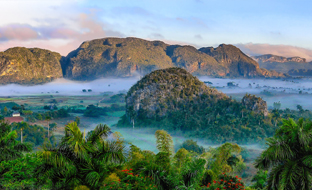
Vinales is 195 km from Havana and 350 km from Varadero. Viñales is a beautiful and lush valley in Pinar del Río province of Cuba, with a population of around 10,000. It's about 26 kilometers north of the city of Pinar del Río, and was declared a UNESCO World Heritage Site. Viñales is said to be Fidel Castro's favorite place in Cuba. The mountains are beautiful; the farmers grow the best tobacco in the world. It is one of Cuba's greatest natural attractions.
-
The Bellamar caves
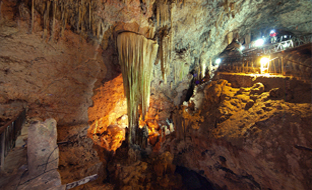
The Bellamar caves have been one of the most-visited Cuba tourist attractions. Cuevas de Bellamar. They will both impress and confound you all at once. Hidden underground, away from the tropical sun, a magical world exists here, where mesmerizing crystalline domes and formations come in an astonishing range of shapes and sizes. Mind-boggling stalagmites and stalagtites are found within, in conjunction with pictographs from indigenous peoples and a network of mostly clear rivers and streams. Believed to have been formed some 300,000 years ago. The cave is located in the city of Matanzas is 47 kilometers away from Varadero.
-
Trinidad
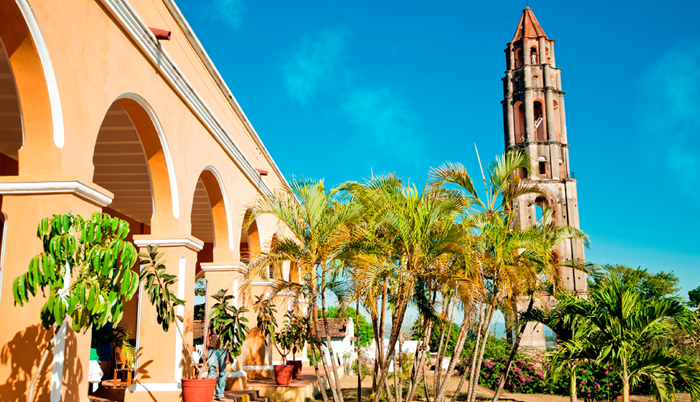
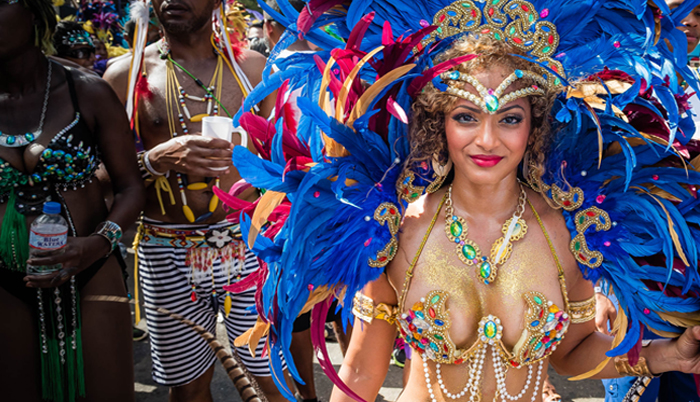


Trinidad is one-of-a-kind, a perfectly preserved Spanish colonial settlement where the clocks stopped ticking in 1850. It's easy to see why Trinidad has been called "the museum city of Cuba. Declared a World Heritage Site by UNESCO in 1988, Trinidad's secrets quickly became public property and it wasn't long before busloads of visitors started arriving to sample the beauty of Cuba's oldest and most enchanting "outdoor museum". The meticulously preserved town offers a window into the past, from its sprawling colonial palaces and plazas to its remnants of sugar mills and slave barracks from another era. Soak up the rich Spanish colonial architecture by taking a stroll through the picturesque cobblestone streets of this very walk able city. The town retains a quiet, almost soporific air in its rambling cobbled streets replete with leather-faced guajiros (country folk), snorting donkeys and melodic, guitar-wielding troubadours.